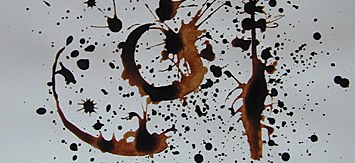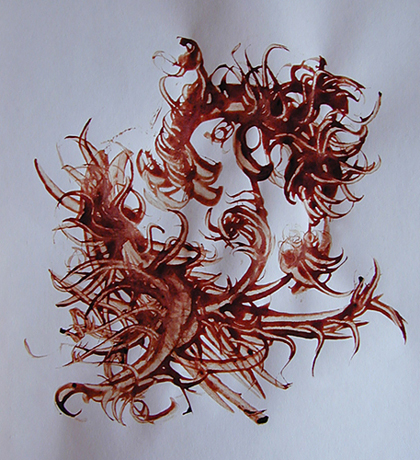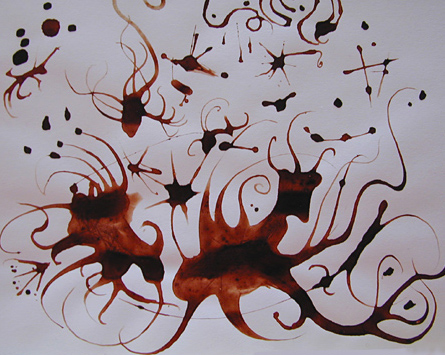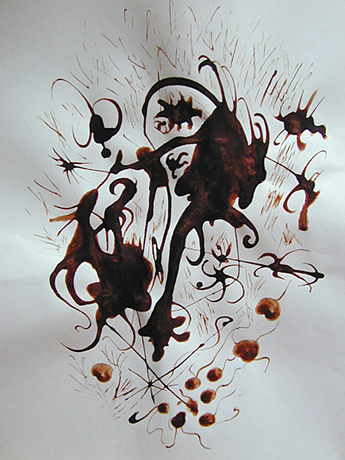Moudra krev

Spiralingmoon.com
vanessa tieg
the workshop
Why Is Your Menstrual Cycle Valuable?
Your menstrual cycle is your energetic key to spiritual wholeness and well-being. When you connect your menstrual, lunar and astrological cycles, you begin "spiraling with the moon."
You can tap into your natural feminine wisdom and creative powers by experiencing your cycle in connection with the regular rhythms of the lunar cycles and your natal horoscope. Every month Spiraling Moon helps you deepen your self-knowledge and creativity. Spiraling Moon will make you feel more physically, mentally, emotionally, and spiritually alive and activated.
Consciously experience the four distinct phases of your womb cycle: menstruation, pre-ovulation, ovulation, and pre-menstruation. Where these phases occur with the changing moon phases in relation to your natal astrology speaks to your evolution in life.
Spiraling Moon will awaken your embodied divination tool -- the menstrual cycle -- to further your creativity. It will also inspire you to celebrate each new cycle as your rite of rebirth into profound growth.
You will also discover how your natal lunar phase (the moon's phase at the time of your birth) influences your fertility and also reflects your psychological nature
Spiraling Moon is by appointment in private or group workshops taught by Vanessa Tiegs in San Francisco.
To schedule a workshop email Spiraling Moon <mailto:info@spiralingmoon.com> or call Vanessa at (415) 566-2425.
blood mysteries
"Spiritual, consecrated, wonderful, incomprehensible -- said of woman at the menstrual period." This is an American Indian definition of taboo, a word derived from Polynesian tapua, meaning magical and menstruation.*
*Judy Grahn, Blood, Bread, & Roses:
How Menstruation Created the World
The menstrual cycle is one of the five blood mysteries of womanhood. A woman can use this natural source of power and wisdom to sharpen her intuition, creativity & novelty, and self-define her life experiences through a more wholesome perspective.
What Are Women's Five Sacred Blood Mysteries?
1. Menarche
2. Defloration
3. Menstruation
4. Birthing
5. Menopause
Each mystery marks a transformational stage
or rite of passage in a woman's life.
Menarche is a girl's initiation into womanhood. The word literally means first moon: mene meaning moon and arche meaning beginning. Cultures that have kept old traditions, like Kerala in South India, regard a girl's menarche as so highly powerful that they celebrate it as a divinitory event for the entire village. Menarche rites are discussed in interviews with Judy Grahn, Dianne Jennett & Virginia Bean Rutter.
Defloration is the blood of the sacred veil of woman, the hymen. This rite of passage brings a woman into her own sexuality. Virginia Bean Rutter says, "she is forever changed physically and psychologically. Part of that change is accepting separation not severance from her mother, becoming queen in her own right."
Menstruation is a woman's biorhythmic connection to the cosmos: the earth, the moon and the sun. This blood mystery is a woman's cyclical rite of passage marking her progressive renewal and vast creative potential as she matures through her life experiences with each moon cycle in connection to her menstrual cycles. Did you know that every moon cycle has a name and a folklore behind its name? Did you ever think that each menstrual cycle offers new gifts of insight?
Mother's blood at birth is an early memory we all hold somewhere within us. A woman's experience of giving birth is an opportunity for her to get in touch with her true power. Childbirth has enormous potential to transform the way a woman esteems herself.
Menopause, as woman's passage to power, energy and freedom is, as Leslie Kenton says, "a time of celebration when a woman's creativity is set free for use in whatever way the whispers of her soul dictate." Passage to Power: Natural Menopause Revolution.
Many women struggle with PMS.
How do I get rid of PMS?
Honor the menstrual cycle and understand its feminine wisdom. In the Spiraling Moon workshop you will learn how to chart your cycle with nature's cycles and use waxing and waning moon energies to benefit your creativity. Women who have taken Spiraling Moon have transformed their menstrual cycle from an irregular, sometimes negative, and often inconvenient experience into a positively empowering one. PMS is a controversial issue, as it is associated with a woman not being emotionally in control of herself, exploding into tears, and over-reacting, when actually it is repressed truth coming out. Women can alleviate PMS symptoms by transforming PMS into PMP.
What is PMP?
Pre Menstrual Power -- a term I use to describe
a woman who is in her menstrual power.
Portrait of a PMP woman: She understands her own cycle, uses the time to really go into herself, renew, and start a new cycle in her life, is wise, listens to herself, pays attention to what comes up, identifies her needs and gets them met, honors her intuition, allows her emotions to flow. She feels powerful because she sees right through things and others ... she is self-loving and self-esteemed. She's in touch with her inner truth and harmonizes with her cycle.
Interview with Judy Grahn
Judy Grahn, prolific, award winning poet, author and theorist, has been following a women-centered path for thirty-five years. In 1973, she began developing what she has called "metaformic theory" -- a new relational origin story that women's menstrual rituals are the root of human culture, and that in human evolution women and men have markedly different relationships to blood.
In her book, Blood, Bread and Roses: How Menstruation Created the World Judy explains the ramifications of metaformic theory, which certainly brings back awareness of how important womenÕs menstruation has been to the origin of human consciousness. While living and studying in South India she applied and expanded her theory, which has resulted in her doctoral dissertation at California Institute of Integral Studies, Are Goddesses Metaformic Constructs? An Application of Metaformic Theory to Menarche Celebrations and Goddess Rituals of Kerala and Contiguous States in South India. Today, she co-sponsors a series of lectures in Oakland called Goddess is Alive! and is the co-director of the WomenÕs Spirituality Weekend Graduate Program at New College of California, as well as on the faculty of the Writing and Consciousness MFA Program.
Her other works include The Work of A Common Woman, She Who, A Woman Is Talking to Death, Queen of Wands, Queen of Swords, MundaneÕs World, Another Mother Tongue. Visit Serpentina <http://www.serpentina.com/women-x.html> to learn more about Goddess is Alive and to read articles about the sacred feminine and other related topics.
On Spring Equinox 2001, I interviewed Judy and began by asking her why menstruation and the topic of menstrual blood became hidden and shamed in our culture.
Judy Grahn, Ph.D.
Interviewed by Vanessa Tiegs
March 20, 2001
San Francisco, California
VT: What is the reason why women's menstrual blood is not celebrated in our culture, as it is in many menarche rituals in Kerala, India where until recently the first drops of a girl's blood were read as symbols of divination, but instead is something hidden and shamed in modern westernized cultures?
JG: A lot of women in our backgrounds were taught not to talk about menstruation, to be ashamed of it, to hide it, or to consider it as just biology which doesn't warrant any more attention than that. The reason that we do that is because that is the Christian puberty ritual that has come down to us for the last 2,000 years, which evidently first developed as a shift of the sacralizing of the blood power over to the masculine -- or over to the blood of Christ in this case. In our culture this has been carried out all across the board, so there's been a transference of the sacralizing of blood and women's blood mysteries entirely and solely into the masculine. What we have is an exaltation of soldiers, warriors, and bloody shoot-outs -- the subjects of all kinds of television shows -- whereas the peaceful blood of menstruation is hardly mentioned at all. Even in the television ads, it's only recently that the color red has even been allowed into commercials.
So, the new revolution for our age is to discover and find through research -- through asking and listening about the stories of indigenous peoples, non-Christian peoples all over the world -- that menarche rituals have been celebrated, and in the past and in some areas still continuing into the present, that menarche was a cause for enormous celebrations. That turning in a woman's life of becoming mature was marked by an entire village, or huge extended families... and even large groups of people -- 10,000 people at a time. It was a cause for big community gatherings and feasting and even processions. She was dressed really to the nines... really exquisitely dressed to be in her greatest beauty, and was given wealth at that time. That is so different from the way that menstruation was treated inside the Christian influenced culture. It's the difference between night and day... white and red... there's no comparison. I think that it's one of the biggest differences between those two peoples... in fact, people's who celebrate the sacred feminine and peoples who don't. When the sacred feminine is in the picture, there's a respect for menstruation and women's bodies and the powers of women's bodies that comes with that.
VT: Why do you think Christian religions exclude celebration of the feminine?
JG: Creative powers of human beings, and even of deity were understood as having to do with menstruation. So it may have been that when a male creation principle, the principle of paternity as a cosmic idea, came to the forefront it couldn't unless the feminine blood power was suppressed. The shift seems to have had something to do with the deity itself being masculine, and singular.
VT: So it is possibly the shift from a feminine deity to a solitary masculine one which is one reason why menstruation is not celebrated but denigrated?
JG: Not even denigrated. Hidden. Not to be talked about at all. To disappear. Which created a shame. The fear of having a single dot or mark on one's skirt when you go to school.
VT: You developed "metaformic theory," which you explain in Blood, Bread & Roses. An important basis to that theory is how women's entrainment to menstruate with the moon is at the root of human civilization's development, meaning geometry, cooking, counting, calendars, medicine, cultivating foods, etc. originate from the "menstrual mind" or "menstrual logic." Could you say more?
JG: What interests me about menstruation is that it seems to so thoroughly explain why we evolved as human beings to begin with... how that came about. My theory postulates that 4 million years ago or more female ancestral primates recognized their connection with another cycle which was the lunar cycle. That recognition and that relationship created culture and consciousness. Metaformic theory says basically that human knowledge is contained in the cultural forms that came out of all different kinds of menstruation seclusion rituals. The rituals that the males created to keep up with what the women were doing were also blood rituals.
VT: I like the way you see what you call "men's parallel menstruation rites" (i.e. circumcision, subincision, piercings which are done in imitation of women's menstrual rites) as a braiding in the development of consciousness.
JG: Yes, we seem to braid back and forth between women's and men's rituals, and the stories that go with them. We can get stuck in a story, but with two genders what one doesn't know, the other might, so fortunately we cross over in various ways. I think that's why women now are learning all kinds of occupations that men developed in the last 150 years. Increasingly, women's older forms of knowledge are also coming out into the world and becoming public. This is another piece of that origin story in my book, but I don't want to say more than that because I think that people should go to Blood, Bread & Roses where I can tell it in more detail.
VT: Your book is extraordinary and so important because it brings about a shift in consciousness for everyone I've talked to who has read it. It is a revolutionary work that puts woman's blood mysteries into the picture of how we got to where we are today.
JG: Yes, after reading it people aren't the same, they see the world entirely differently.
VT: How did women use their blood in their menstrual rituals (a word which by the way derives from Sanskrit r'tu, a word which can mean both menstruation and the ritual heterosexual act following the woman's emergence from menstrual seclusion) to form human culture? What would you say is the most obvious evidence of how women used their blood in ritual?
JG: The most obvious I think is the use of it as paint, as a signal marking so that blood became a language. It was the first ink, the first paint, the first signal language as a cosmetic.
VT: What do you think is the motive behind women inventing and wearing cosmetics?
JG: The visual body language of cosmetics I have expanded into a whole philosophical explanation for culture as human language--beginning with female expression of her state of being, as sexual or not, as "comeherenow" allure or "get away, I'm not available!"
This interview took place March 20, 2001
©Copyright Spiraling Moon 2001


